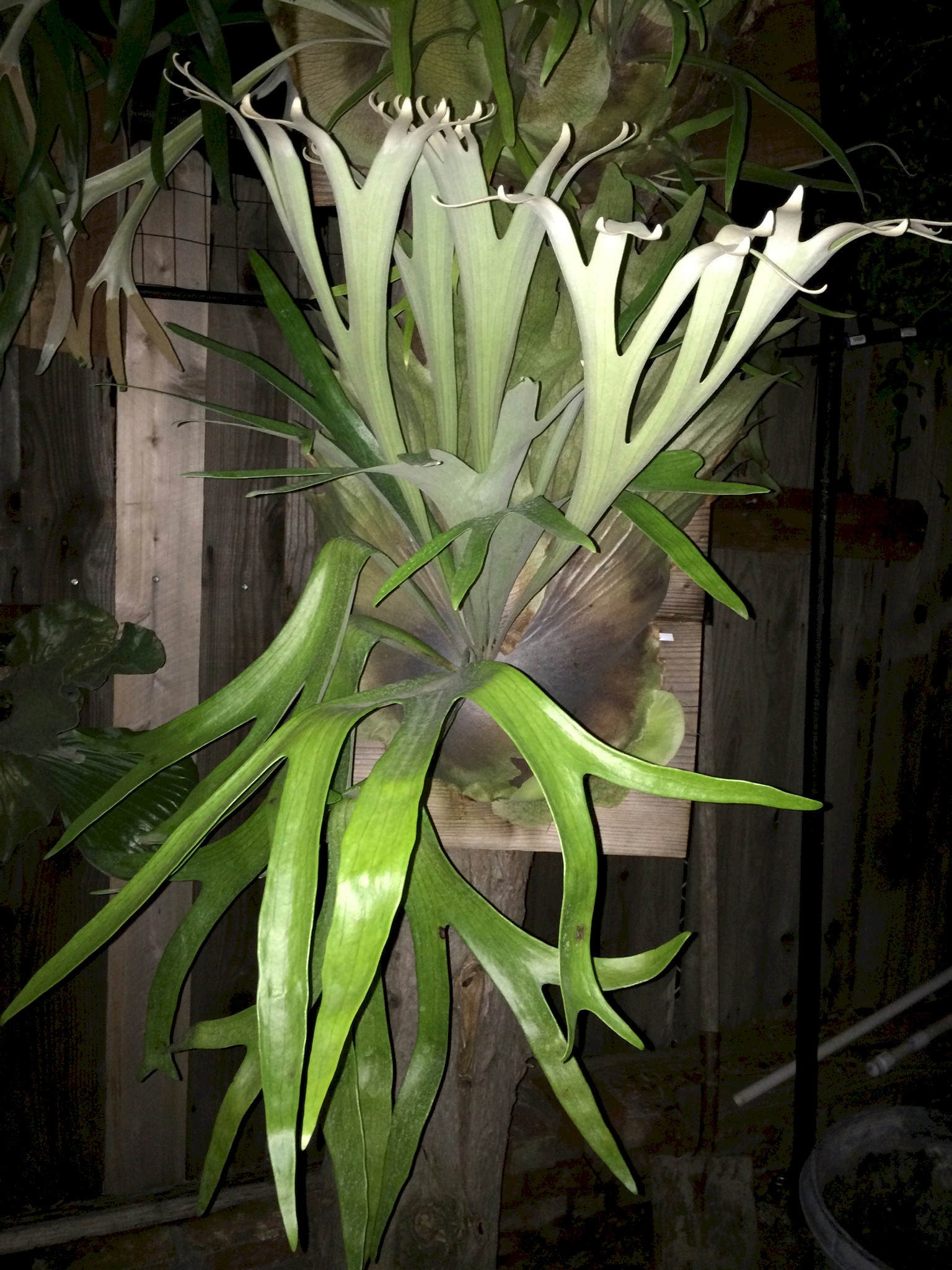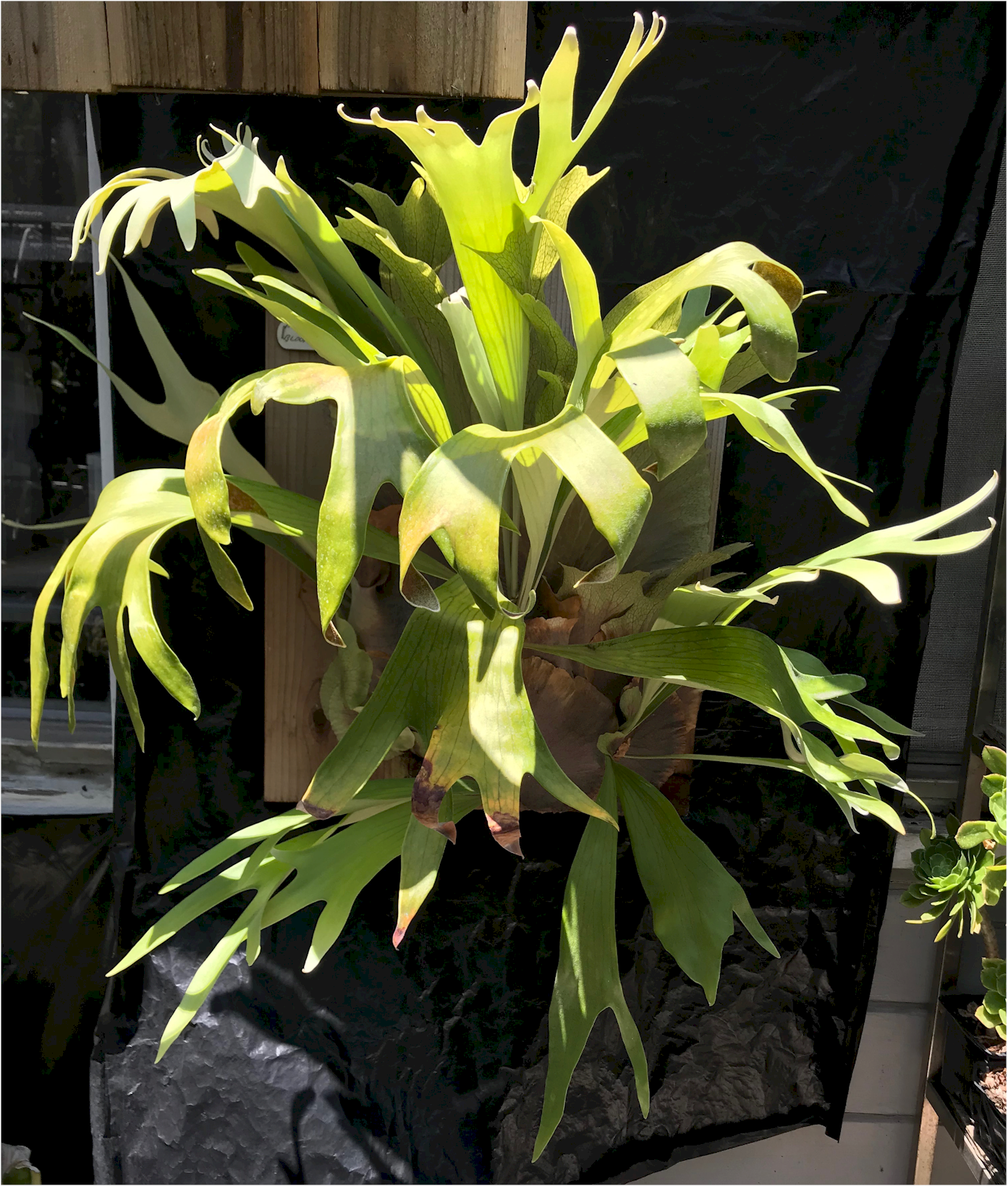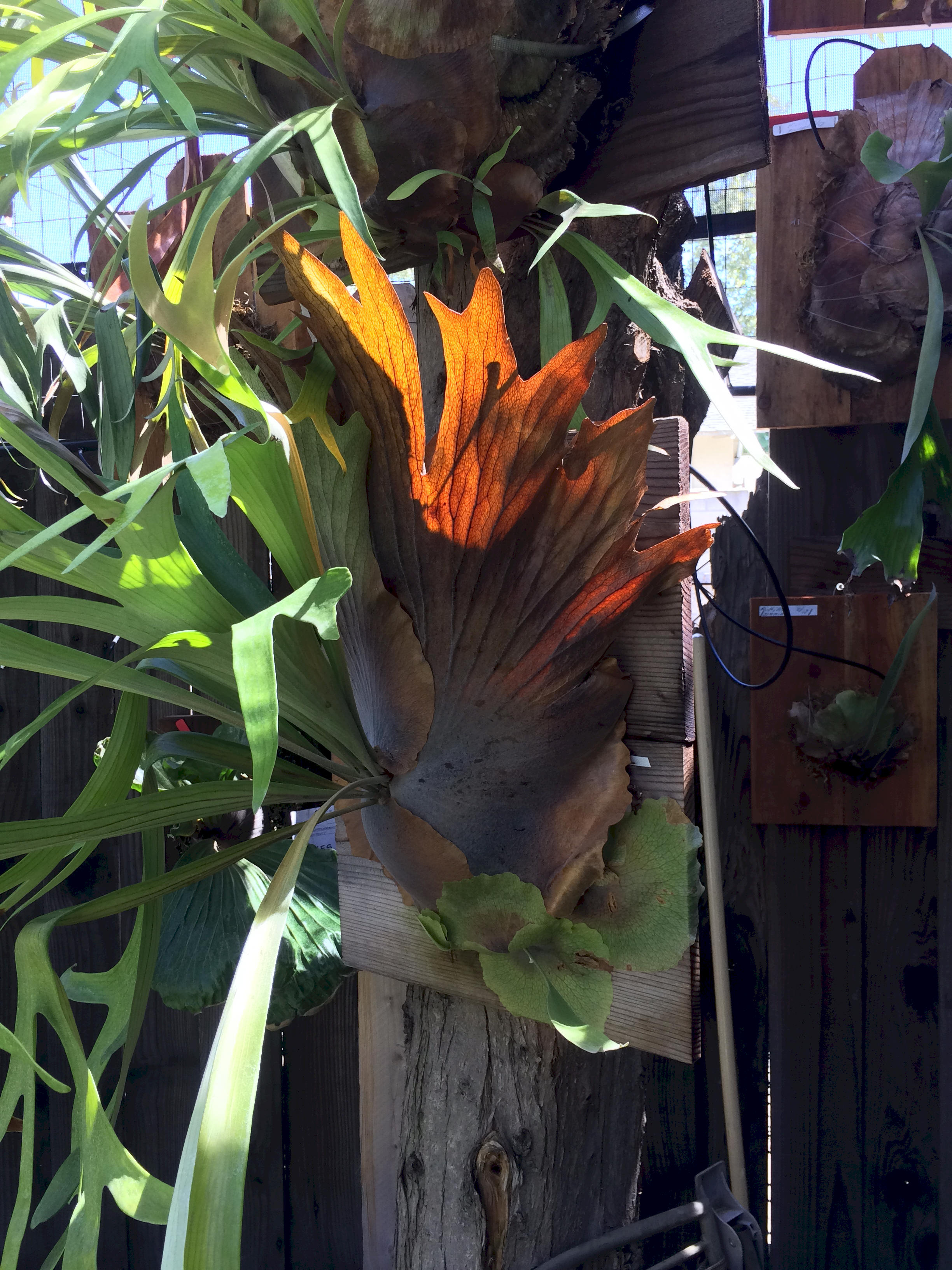|
How to Identify Platycerium willinckii
Photo: DavesGarden.com
Platycerium willinckii are one of the more common platyceriums, however most people assume they are a bifurcatum. The P. willinckii is a member of the bifurcatum complex and at first glance look like a bifurcatum. The bifurcatum complex consists of; bifurcatum, hillii, veitchii and willinckii. The P. bifurcatum generally has a narrow fertile frond. The P. hillii has a wide fertile frond and a rounded shield frond. The P. veitchii is conditioned to be a full sun platycerium and has a grayish green color. The P. willinckii has four unique traits the others do not have.
Second the fertile fronds can be narrow or wide like the P. bifurcatum and P. hillii. But as they grow out of the bud area they grow edgewise and as they get more mature they rotate to a horizontal growth pattern to take advantage of sunlight.
And forth, the shield fronds turn a rich brown providing a nice contrast between the shield fronds and the fertile fronds. |
|
[ Home ] |



